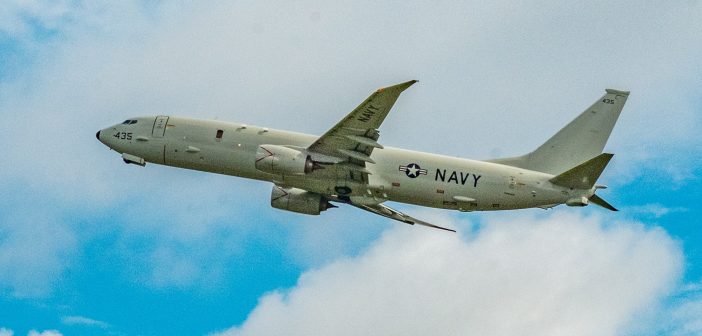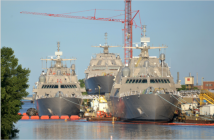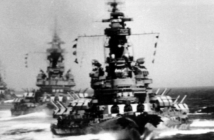NORFOLK, Va. — As Hurricane Dorian strengthened to a Category 3 storm Friday afternoon, the U.S. Navy was already moving ships, aircraft and people out of the storms potential path.
As of mid-Friday afternoon, Dorian’s winds are already in excess 115 miles per hour. National Weather Service predictions have Dorian possibly strengthening to a Category 4 storm by landfall. That’s now projected for wee hours of Tuesday morning.
The level of uncertainty of the storm’s track is still high, meaning some decisions can’t be made yet, officials tell Defense and Aerospace Report.
“Our top priority must always be the safety and security of our ships and aircraft, as well as our sailors and families,” said Rear Adm. Don D. Gabrielson, who commands Naval Station Mayport-based U.S. Fourth Fleet, the maritime component of the Miami-based U.S. Southern Command.
“We move our ships and aircraft in order to mitigate potential damage.”
When getting these high-dollar assets out of harm’s way isn’t an option, Gabrielson said that commands can take “extra precautions to best protect,” the assets and their operators.
If forced to ride out a storm of this potential magnitude in port, skippers have the option of breaking out more mooring and storm lines to further secure their ships, Gabrielson said. Also an option is dropping the anchor along with disconnecting shore power cables if things get even rougher.
The sortie of ships from the basin at Naval Station Mayport began Thursday afternoon with the coastal patrol vessel Shamal’s departure, according to Cmdr. Kate Meadows, spokeswoman for 4th Fleet. Two littoral combat ships, the Billings and Milwaukee left this morning, she said and added that the guided missile destroyers Lassen, Paul Ignatius and Farragut would leave this afternoon.
Eight ships, Meadows said, will hunker down in Mayport including the amphibious assault ship Iwo Jima; the dock landing ship Fort McHenry; the guided-missile cruiser Hue City; the guided-missile destroyers Roosevelt, The Sullivans and Thomas Hudner; and the littoral combat ships Detroit and Little Rock.
A similar scene is playing out at Naval Air Station Jacksonville as five fleet patrol squadrons squadrons assigned to Patrol and Reconnaissance Wing Eleven and Patrol Squadron 30, the fleet replacement squadron known as the “Pro’s Nest” started bugging out on Friday, too.
According to Cmdr. Jenn Cragg, spokeswoman for Naval Air Forces, Atlantic, VP-30 along with the “Red Lancers” of VP-10, the “War Eagles” of VP-16, the “Tridents” of VP-26, the “Pelicans” of VP-45 and the “Broad Arrows” of VP-62 have already flown their air-worthy aircraft to airfields out of the storm’s path in Navy Regions Southeast and Mid-Atlantic.
Squadrons with aircraft unable take flight are moving them inside hangars for the duration of the storm.
Just where the six active duty and one reserve helicopter squadrons based at the two area airfields end up hasn’t been determined. These could be a needed assets for relief efforts in the storm’s wake, so they’ll leave Sunday once officials have a better idea of Dorian’s landfall location, Cragg said.




